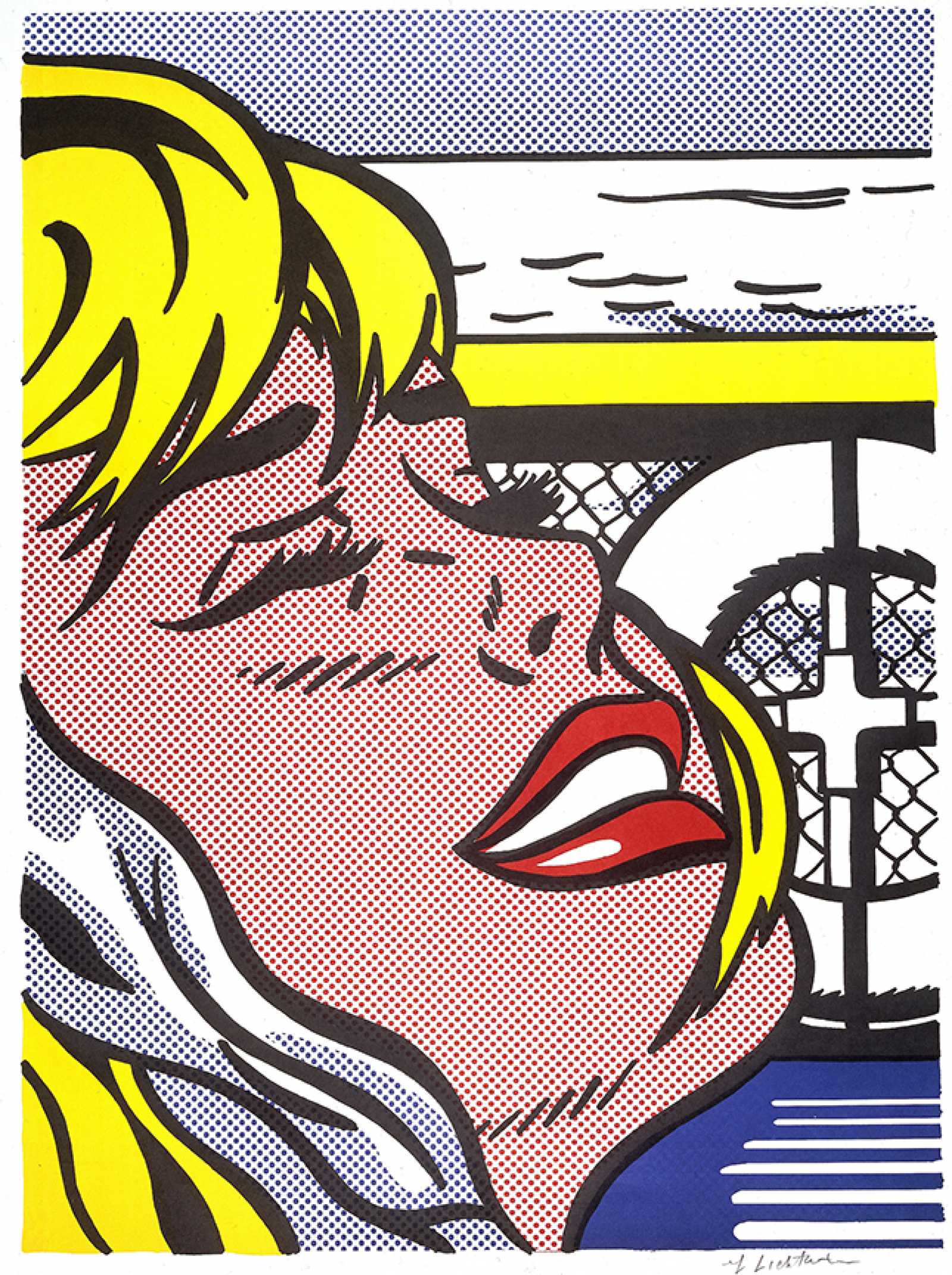Get Inspired by Roy Lichtenstein
Roy Lichtenstein (American, 1923-1997), Shipboard Girl, 1965, offset lithograph in four colors on white wove paper, 27 x 20 inches. Promised gift of Donna and Cargill MacMillan, Jr., L2008-43.
In the 1960s, artist Roy Lichtenstein observed how his environment was conditioned by the commercial use of images to sell products. He saw these images in popular culture, advertisements, and changes in technology, all of which inspired his work with a new, modern sensibility.
Observe your surroundings for advertisements or images from popular culture to create a comic image using techniques inspired by Roy Lichtenstein’s art.
Supplies:
- Drawing paper
- Black marker
- Coloring supplies, such as markers or paint
- Pencil
- Eraser
- Comics, newspapers, magazines, etc. for inspiration
Step 1
Look through comics, magazines, or other printed material for images that interest you. You might also think about popular images, such as from a game or a cartoon or a character from a movie. If you can, find the image online to use as your reference.
Roy Lichtenstein would often go through comics to look for material that had strong visual impact and offered universal messages; however, some of his content seemed completely meaningless. He was often criticized for copying existing images, but in doing so he was transforming them into subject matter for his art.
Step 2
Practice drawing your image in pencil. You might even trace your image; just make sure it is large enough for you to color.
Step 3
Outline the image in black for your final drawing.
Lichtenstein's paintings often have thick black lines like those that appear in the comics.
Step 4
Select three or more different colors. The artist often used primary colors: red, blue, and yellow.
Choose areas of your image that will be colored—either with solid colors, or dark shades (with dots placed closely together) or lighter colors (with dots spaces far apart).
The dotted effect in Lichtenstein’s paintings is inspired by the Ben-Day printing process, an inexpensive printing method that was used for comics and other color printing that began in the 19th century and continued on into the middle of the 20th century. This process uses small dots of the same size, arranged in straight lines, to create color and shading. The closer the dots, the darker the color; the further the dots, the lighter the color.
Think about this technique as you color your own image. You might even use a straight edge as you apply your dots.
Tip: Markers with a round tip will work best to create dots. If you are painting, you could dip the eraser end of a pencil in paint to create the same size dots.
Step 5
Finish coloring.







